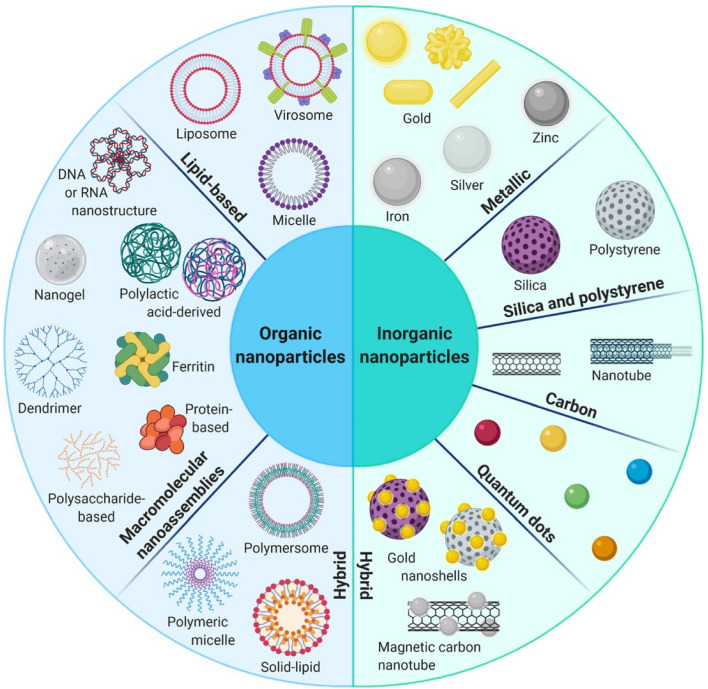Fig. 6.
Chemically modified nanoparticles intended for use in cancer therapy. These nanoparticles can be classified as either inorganic or organic. Inorganic nanoparticles, such as metallic, silica, carbon, and quantum dots, are highly stable and possess electronical and optical properties that make them useful for cancer imaging and theragnostic. However, their solid cores may lead to the rapid degradation of conjugated therapeutic molecules in vivo. Organic nanoparticles, on the other hand, such as lipid-based and macromolecular assemblies, are less stable but have good biocompatibility and provide multiple opportunities for drug functionalization either on their surface or within their interior. Hybrid nanoparticles are a combination of both inorganic and organic nanoparticles and offer improved biocompatibility and stability. Reprint from [131] with a permission from Springer Nature

